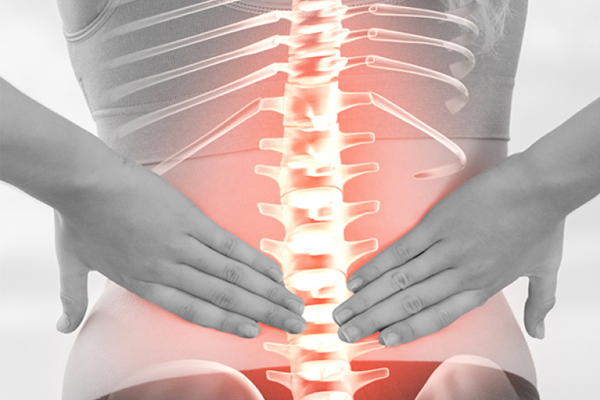In a previous article, we covered 5 of the more common dance injuries. At the top of the list was Lumbosacral injuries, more commonly known as the lower back area. It is the base of the spine and crucial to the connection between the upper and lower body. But this is not the only area of the back that is known to frequently plague dancers if they are not careful or pay attention to their body’s limits. It is important to be aware of some of the specific types of back injuries to this area and others. They can seem minor but left uncared for, can be some of the most detrimental to a dancer’s career. It is important to know when to seek medical advice.
Common Back Injuries:
Muscle Pull in the Quadratus Lumborum
- About the Injury:
Strain or overexertion of the Quadratus Lumborum
- Symptoms of Injury:
Tightness and aching in the lower back (though it sometimes may present itself as a sharper pain
- Causes:
Like many muscles pulls it can be caused by overexertion. Other causes can also include: poor posture, unequal leg length, muscle weakness, and trauma
- Further Complications:
While soreness and muscle pain are common for any athlete. Attempting to fight through the pain can lead to worsening the pull, chronic low back pain, as well as injuries to other parts of the body trying to compensate for the injury, typically the hips.
- Treatment:
Rest, heat or ice, yoga and stretching, massage therapy, and, if necessary, medication
Stress Fractures of the Lower Back (also known as Spondylolysis)
- About the Injury:
This injury is most common in younger dancers. It forms in the thin area of the vertebral bone, known as the pars interarticularis. It is the part of the vertebra that helps form the joint with the other vertebra. A stress fracture is a unique type of fracture or breaks compared to a traumatic break. As it is but a complete break but happens over time when the bone can regenerate fast enough to keep up with the strain.
- Symptoms of Injury:
Unfortunately, injury can exist for some younger dancers for a period of time without any noticeable symptoms. The most frequent symptom is a dull lower back pain that worsens over time. It often feels similar to a muscle strain. If you think your child may have or be at risk for Sondylolysis it is important to consult a doctor. This injury does not mean the end of a dancing career. But special precautions are recommended to ensure it does not interfere with your dancer’s experience.
- Causes:
Overexertion
- Treatment:
Rest, acetaminophen, and several months of physical therapy is the best way to treat this type of injury. It is important to improve core and muscle strength around the injured area to reduce strain.
Disc Herniation (or “Slipped Disc”)
- About the Injury:
A “disc” is the cushion between the individual vertebrae. This disc can sometimes tear through is protective exterior. These types of back injuries are far more frequent in older dancers than in children.
- Symptoms of the Injury:
Arm or leg pain. Herniations of the lower back most commonly result in the buttocks, thigh, and calf. It is a noticeable, intense pain. There may also be numbness, weakness, or tingling. Though, it is possible to have a herniated disk and not be aware of it.
- Causes:
Some people are at a higher risk for this injury simply based on genetics, but the most common causes are excess body weight and physically demanding jobs that require repetition of strenuous motions.
- Treatment:
While physical therapy, yoga, and other non-medical activities can be helpful. If the herniation is severe enough, it will likely require over-the-counter medication, and, possibly, surgery.
Lumbar Facet Sprain
- About the Injury:
This type of sprain is often caused by hyperextending the spine, causing two types of joints to be compressed.
- Symptoms of the Injury:
It typically presents as back pain – the tenderness of the muscles connected to the spine occasionally accompanied by radiation to the groin and the back of the leg, but it does not extend past the knee
- Causes:
This type of sprain is often caused by hyperextending the spine, causing two types of joints to be compressed. Especially when bending forward and backward while rotating the spine.
- Treatment:
Fortunately, this injury does not require surgery. Rest, physical therapy, and a slow progression back into dance should resolve the injury.
General Risk Factors
The risk factors for many of these back injuries include: fatigue, inadequate conditioning, poor flexibility, and being underweight.
Conclusion:
Back injuries are to be taken seriously as many risk developing into debilitating injuries that will put one’s future in dance at risk. It is important to listen to your body or your dancers. It is also important to take medical advise seriously and to come back stronger than before the injury.


